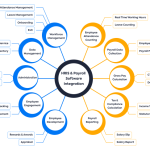The concept of “incubation” is integral to many fields, especially in the world of innovation and creativity. In cognitive psychology, incubation refers to the period of unconscious processing that occurs when a person takes a break from an unresolved problem, often leading to creative insights upon returning. When we apply this theory to the context of space exploration, it takes on a unique significance. It embodies the idea of fostering and nurturing ideas, technologies, and partnerships that can evolve in a space where time, resources, and challenges create an environment conducive to discovery and innovation.
In this article, we’ll explore the incubation theory as it relates to space exploration, innovation in space technology, and the ecosystems that foster the advancements needed for humanity’s next great frontier.
What is Incubation Theory?
Incubation theory, in its simplest form, is the process of allowing ideas, concepts, or problems to “bake” over time, often in an unconscious or passive state. The term originated from cognitive psychology, which suggested that stepping away from a problem or allowing a period of rest enables the subconscious mind to continue working on it, often leading to moments of insight or creative breakthroughs when the individual returns to focus on the issue.
In the broader sense, incubation applies not only to individual cognition but to processes in businesses, organizations, and societal developments, where a nurturing environment allows ideas to grow and mature.
Space Exploration and Innovation: The Role of Incubation
The space industry, particularly over the last few decades, has seen tremendous technological advancements. From reusable rockets to the development of artificial intelligence for autonomous space travel, these innovations did not happen overnight. They are the result of years of research, experimentation, and sometimes even failure, during which ideas were incubated before breakthrough moments emerged.
- Technological Incubation Space exploration demands cutting-edge technologies that often require long periods of incubation to develop. Consider the case of rocket propulsion systems. The early days of space exploration were marked by huge leaps in technology, but even today, the engineering solutions required to send humans to Mars, sustain life in outer space, and safely return astronauts to Earth, are still being refined. Technologies such as ion thrusters, life support systems, and radiation shielding often exist in theoretical or prototype stages for long periods before they are proven and integrated into operational missions.The incubation of these technologies takes place in research and development (R&D) labs, as well as in the realm of private companies, universities, and government space agencies like NASA. Start-ups like SpaceX, Blue Origin, and Rocket Lab are leading examples of how new entrants in the space industry have benefited from years of research, testing, and incremental improvements, much like the incubation process.
- Incubation in Commercial Space Ventures In addition to the technological incubation, the commercial space industry thrives on a business model that incubates new ideas and ventures. The rise of private sector space companies has transformed the landscape, with many startups working on innovative space missions, satellite technology, space tourism, and even space mining. These private companies often benefit from incubator programs, venture capital funding, and government grants. These nurturing environments provide the time and resources necessary to experiment with novel ideas, often pushing the boundaries of what is considered feasible.For example, private space companies such as SpaceX have achieved major breakthroughs with the Falcon 9 reusable rocket. The success of this technology came not just from intense engineering but also from the incubation period in which SpaceX faced setbacks, revisions, and incremental advancements, as they pushed the limits of rocket technology.
- International Collaboration and Idea Incubation Space exploration is no longer a purely national endeavor. The International Space Station (ISS) is an excellent example of how international collaboration has created an environment that fosters the incubation of scientific ideas and technological advancements. Different countries bring different resources, knowledge, and expertise to the table, and working together on joint space missions enables these ideas to mature over time.The ISS itself serves as an incubator for many important innovations that will be critical for future space missions, including habitat life support systems, recycling technology, space farming, and health research in microgravity. These innovations have emerged slowly, over years of collaboration, trials, and errors—perfect examples of the incubation theory in action.
- Human and Social Aspects of Space Incubation Just as technology and business benefit from incubation, so too does the human aspect of space exploration. Human spaceflight, in particular, requires careful preparation, training, and mental conditioning. Astronauts undergo years of training, often with the aid of simulated environments on Earth, where they can incubate the physical and psychological capabilities necessary for long-duration space missions.Furthermore, the social dynamics of working in space are a crucial element of the incubation process. NASA’s simulations, such as the HI-SEAS (Hawaiian Space Exploration Analog and Simulation) mission, have allowed astronauts and researchers to experience the social and psychological challenges of long-term isolation and confinement. These analog missions, lasting from a few months to a year, allow scientists to test how human teams will perform in space habitats, incubating ideas that can later be applied to Mars missions and beyond.
The Future of Space Exploration: Incubating New Frontiers
Looking forward, incubation theory can help guide the evolution of the space industry. As we prepare for more complex missions, such as sending humans to Mars, building permanent lunar bases, or even exploring asteroids for mining opportunities, incubation will continue to play an essential role in technological and scientific advancements.
- Artificial Intelligence and Automation: Incubating AI systems capable of piloting spacecraft autonomously or making real-time decisions will be critical for space exploration. AI could also assist in analyzing data from space missions more effectively and autonomously conducting repairs on spacecraft.
- Space Tourism and Colonization: The development of space tourism and eventual colonization of other planets will require long periods of incubation, testing, and adaptation of various technologies like habitation, waste recycling, energy production, and human health in space environments.
- Sustainability: Space exploration also needs to focus on sustainability, not just in terms of human life but also on how to minimize our impact on space environments. As space debris becomes a growing problem, innovative solutions to manage waste and debris will need to incubate within the research community.
Conclusion
Incubation theory, when applied to the space sector, underscores the importance of time, experimentation, and patience in the pursuit of groundbreaking advancements. As humanity moves deeper into the space age, the processes of innovation, technology maturation, and international collaboration will continue to benefit from the incubation model, providing the foundation for humanity’s continued exploration and eventual colonization of space. Whether it’s a new propulsion system, a habitat on Mars, or breakthroughs in human health, the future of space exploration will be shaped by ideas that have had the time and space to grow, evolve, and mature into the next great frontiers of science and technology.











